Located in Northern Africa, the Sahara Desert is the largest hot desert on the planet and the second biggest desert after Antarctica. This desert is almost as large as the U.S. and shares borders with 10 nations. While most of the Sahara is uninhabited, around two million people live across its vast landscape, excluding residents living along the Niger and Nile riverbanks. But just how big is the Sahara Desert? Learn more about its size in acres, square miles, square kilometers, and more.
How Big is the Sahara Desert in Acres?
The Sahara Desert is a sight to see. Spanning over 2,273 billion acres, it is the biggest hot desert in the world!
The Sahara Desert in Square Miles and Kilometers
This massive desert in Northern Africa covers 3.5 million square miles, approximately 9 million kilometers.

The Sahara Desert covers 2,273 billion acres of Northern Africa.
©MrLis/Shutterstock.com
How Big is the Sahara Desert Compared to the United States?
While the Sahara Desert is smaller than the United States, it is almost the same size. The largest hot desert in the world covers 3.5 million square miles. However, the U.S. spans over 3.8 million square miles.
Size Summary The Sahara Desert
| Acres | Square Miles | Square Kilometers |
|---|---|---|
| 2,273 billion | 3.5 million | 9 million square kilometers |
10 Countries Touching the Sahara Desert
- Chad
- Algeria
- Libya
- Egypt
- Mauritania
- Mali
- Niger
- Morocco
- Tunisia
- Sudan
Wildlife in the Sahara Desert
Africa is notorious for its magnificent wildlife, and the Sahara Desert is no different. Although the climate is extremely hot and arid, animals have the ability to survive. They include:
Antelope
There are two species of antelope in the Sahara Desert, the scimitar-horned oryx and the addax—both species formerly inhabited large areas of the Sahara and Sahel. In addition, they were once abundant in the region but have experienced a sharp decline in their population due to habitat loss, excessive hunting, and periodic drought. Sadly, the addax is critically endangered, with small numbers in Niger and Chad. Furthermore, the scimitar-horned oryx is extinct in the wild.
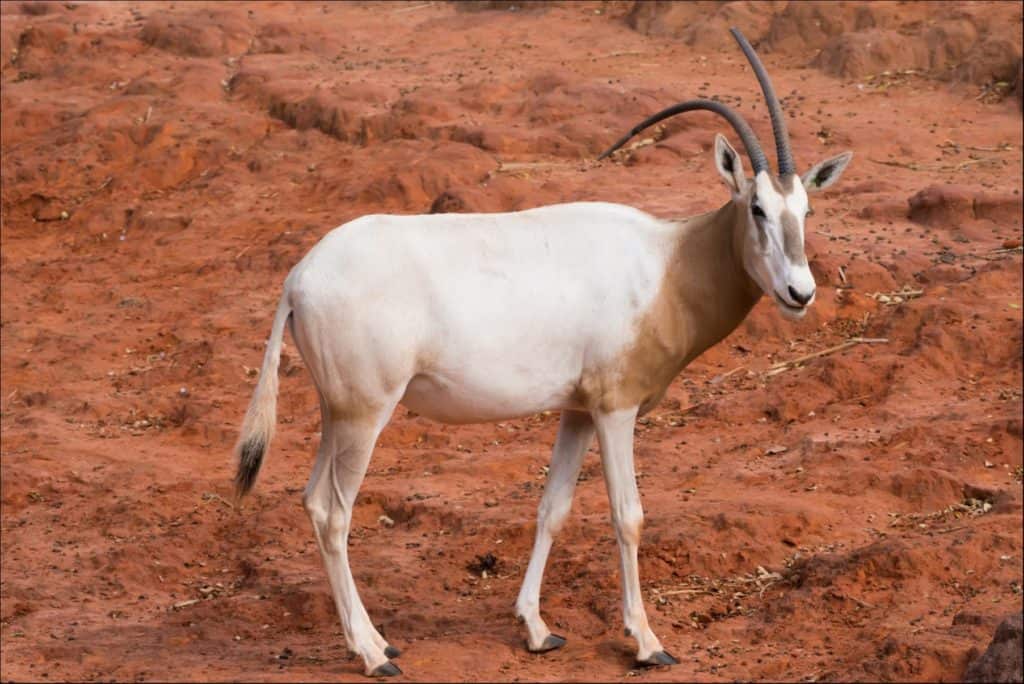
Sadly, the addax is critically endangered, with small numbers in Niger and Chad. Furthermore, the scimitar-horned oryx is extinct in the wild.
©KE.Take a Photo/Shutterstock.com
Gazelles
The addra gazelle inhabits the Saharan Desert from Sudan to Mauritania. However, they move to the desert during the wet season and prefer to live in the scrubland during the dry season. These gazelles have adapted well to the harsh, arid environment. They primarily browse and graze on acacia leaves and grasses. Luckily, their size allows them to balance on their hind legs against a tree trunk, reaching for untouched vegetation well off the ground.
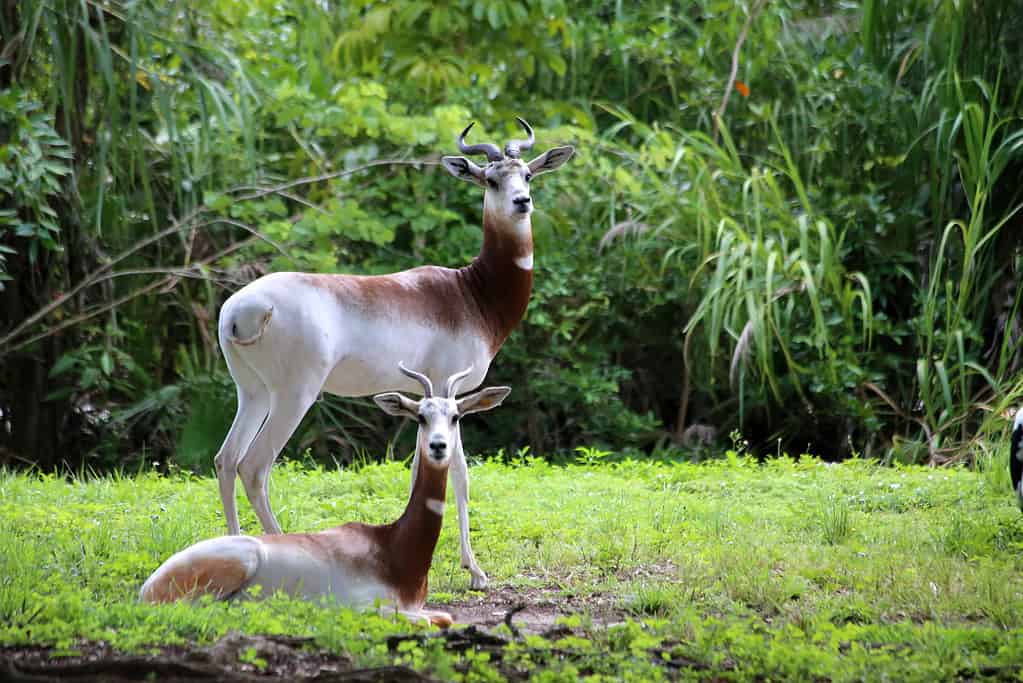
The addra gazelle inhabits the Saharan Desert from Sudan to Mauritania.
©iStock.com/cuatrok77photograph
Striped Hyenas
The smallest species of hyena is the striped hyena; they are extremely rare. These hyenas inhabit mountainous, arid regions with scrub woodland. They build dens in ravines, crevices, and rocky hills. Additionally, spotted hyenas outcompete striped hyenas in open areas. As a result, striped hyenas usually relocated to other habitats.

The smallest species of hyena is the striped hyena; they are extremely rare.
©iStock.com/Meet Poddar
Fennec Foxes
Native to the deserts of North Africa, fennec foxes are small crepuscular foxes ranging from the Sinai Peninsula to the Western Sahara and Mauritania. Its most identifiable feature is its large ears, which help them expel heat and listen to their prey underground. Additionally, it is the smallest of the fox species.
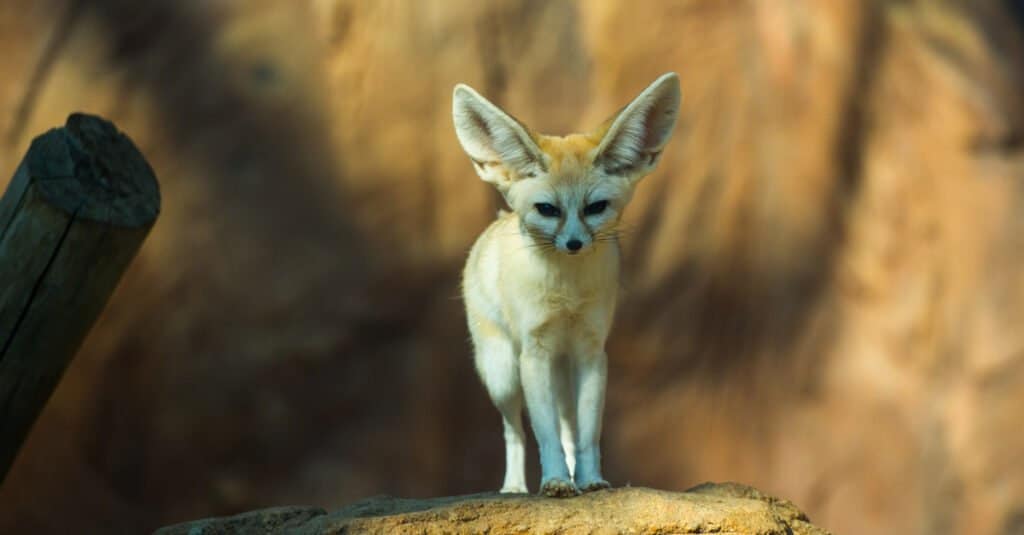
Native to the deserts of North Africa, fennec foxes are small crepuscular foxes ranging from the Sinai Peninsula to the Western Sahara and Mauritania.
©DONGSEUN YANG/Shutterstock.com
DeathStalker Scorpion
These scorpions are one of the most notorious creatures in any desert. However, they are commonly found in Egypt and thrive in temperatures of 75 degrees Fahrenheit. Deathstalker scorpions are nocturnal hunters whose diet consists of crickets, worms, and other scorpions. While these scorpions usually range from three to four inches, Deathstalkers are dangerous. They might have large pinchers, but they deliver a potent dose of poison through their stinger. These scorpions are very aggressive and often attack people or use their stingers in self-defense. Deathstalkers are the third most poisonous scorpion on the planet.
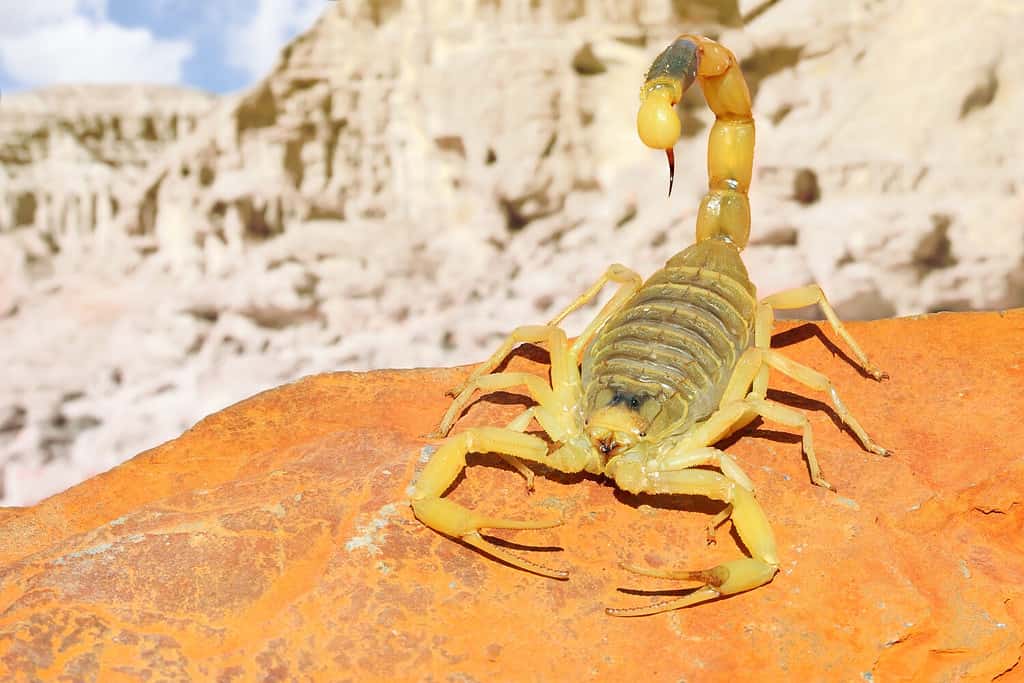
Deathstalker scorpions are nocturnal hunters whose diet consists of crickets, worms, and other scorpions.
©Protasov AN/Shutterstock.com
Leopard
The African leopard is notorious for its adaptability, as it thrives in multiple habitats throughout Africa, like:
- Grasslands
- Mountainous forests
- Savannahs
- Deserts, including the Sahara Desert
These amazing cats are able to survive in desert environments that receive 2 inches of rain annually by absorbing water from eating desert melons and their prey’s blood. But leopards are also opportunistic hunters. They prey on various species, like birds, fish, insects, livestock, reptiles, jackals, foxes, hyrax, antelope, porcupines, and sometimes cheetahs.
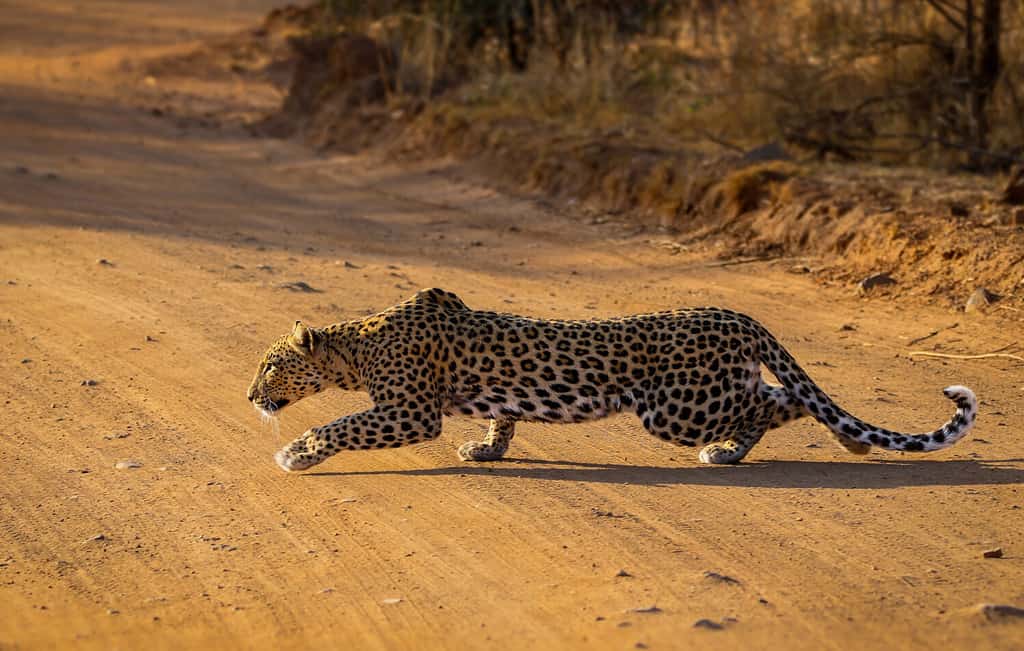
These amazing cats are able to survive in desert environments that receive 2 inches of rain annually by absorbing water from eating desert melons and their prey’s blood.
©Heinrich Neumeyer/Shutterstock.com
Saharan Horned Viper
The Saharan horned viper inhabits arid regions in North Africa, including countries like:
- Mauritania
- Morocco
- Mali
- Tunisia
- Algeria
- Niger
- Chad
- Libya
- Sudan
- Egypt
- Ethiopia
- Somalia
These snakes prefer dry, sandy areas, like the Sahara Desert, with sparse rock outcroppings and around an oasis. Saharan horned vipers spend their days recharging in burrows in the sand, under rocks, hiding holes, and abandoned burrows. But, once the sun sets, they come out to hunt.
These vipers have calm temperaments, but if they are provoked, they give a warning by hissing. Furthermore, they assume a C-shaped position and quickly rub their coils together, making a rasping sound. They are ambush predators, so when they hunt, they lie submerged in the sand, patiently waiting. When their prey approaches, they rapidly strike and inject them with paralyzing venom, rendering the prey immobile.
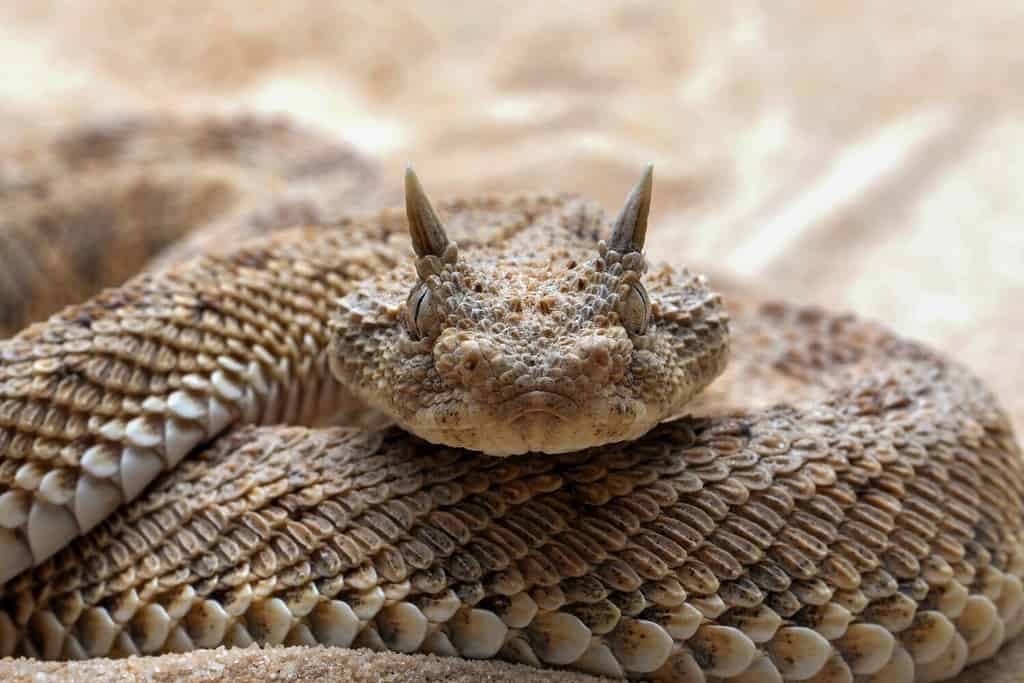
Saharan horned vipers spend their days recharging in burrows in the sand, under rocks, hiding holes, and abandoned burrows. But, once the sun sets, they come out to hunt.
©Lauren Suryanata/Shutterstock.com
African Wild Dog
The African wild dog inhabits sub-Saharan Africa, with dense populations in Southern Africa and southern East Africa. You can find packs in:
- South Africa
- Botswana
- Zimbabwe
- Namibia
- Benin
- Angola
- Niger
- Burkina Faso
- Central African Republic
- Malawi
- Chad
- Senegal
- Mozambique
- South Sudan
- Sudan
- Kenya
- Ethiopia
- Tanzania
- Zambia
These painted dogs, as they are called, occur in arid regions, savanna, open plains, semi-desert, and shrubland. However, they usually avoid forested areas. This is due to their hunting preferences, as they do not like objects in their way while hunting, so they prefer open spaces.
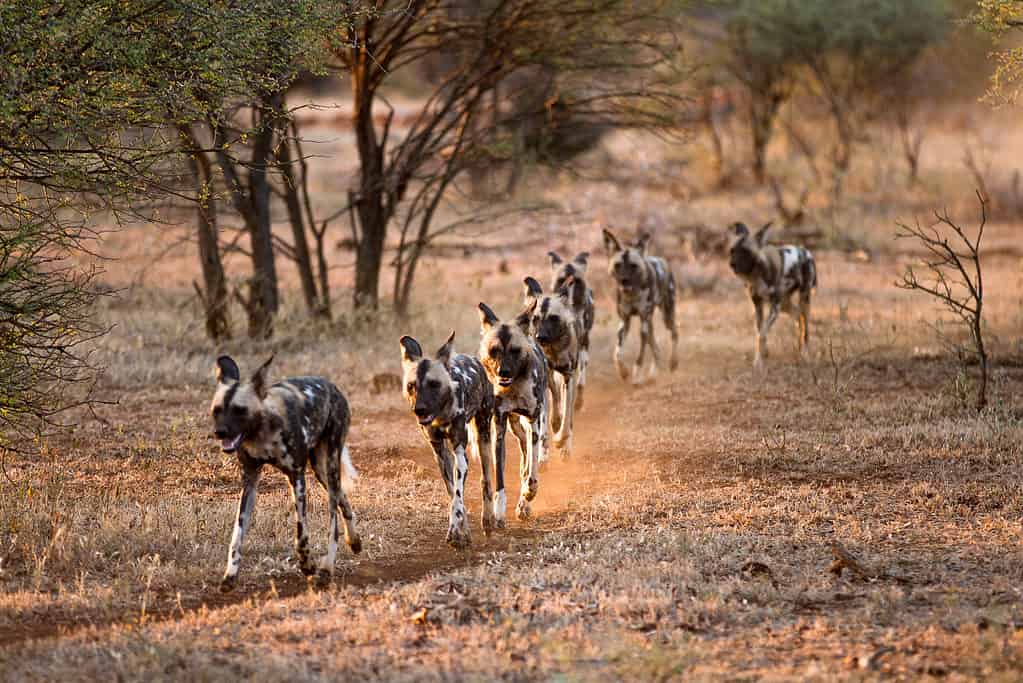
The
African wild dog
inhabits sub-Saharan Africa, with dense populations in Southern Africa and southern East Africa.
©charles Hopkins/Shutterstock.com
Camel
Unlike the other animals on this list, camels are domesticated animals that can survive in deserts. They occur in the Sahara Desert, India, and the Middle East. However, dromedary camels also have feral populations in Australian deserts. These gentle creatures are shy animals that are active during the day. They usually live in groups of around 20 individuals, consisting of multiple females led by an alpha male. Some males live in small groups or become nomadic and live alone.
The alpha males prevent their females from interacting with nomadic or bachelor males by walking or standing between them. Furthermore, they may sometimes get aggressive and drive other males away. They show their aggression by stamping their feet and snapping without out biting. Interestingly, camels seem to remember where they live, especially females who remember where they gave birth or raised their offspring.
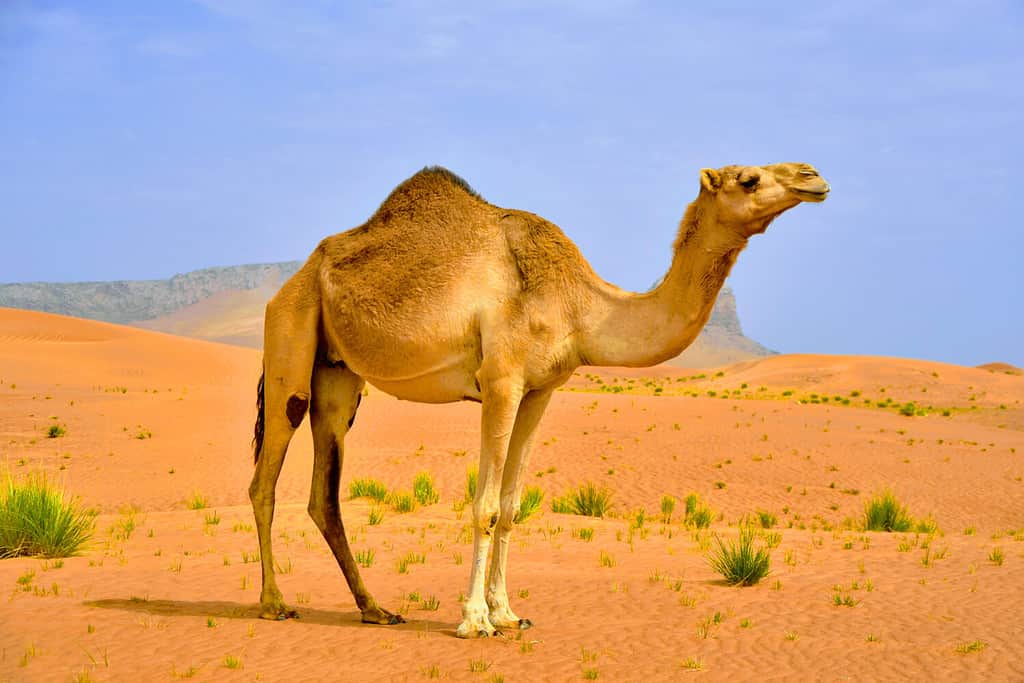
Unlike the other animals on this list, camels are domesticated animals that can survive in deserts. They occur in the Sahara Desert, India, and the Middle East.
©Shengyong Li/Shutterstock.com
The photo featured at the top of this post is © Anton Petrus/Shutterstock.com
Thank you for reading! Have some feedback for us? Contact the AZ Animals editorial team.







